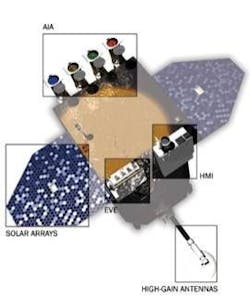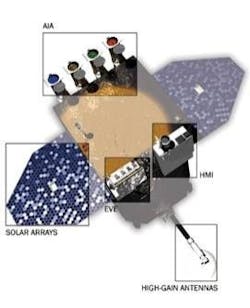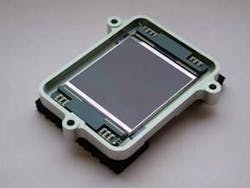CCD sensors study the sun onboard NASA's Solar Dynamics Observatory
In February, six e2v (Chelmsford, UK) CCD imaging sensors launched into space from Cape Canaveral, FL, onboard NASA's Solar Dynamics Observatory (SDO), the first of NASA's Living With a Star (LWS) programs to launch. The programs have been designed to study and understand the causes of solar variability and the impact these have on Earth and Near-Earth space.
The SDO spacecraft has been designed to examine the evolution of solar activity and to refine understanding of space weather by studying the sun on small scales of space and time and in many wavelengths simultaneously. To do this, SDO has three scientific instruments on board: the Atmospheric Imaging Assembly (AIA), the EUV Variability Experiment (EVE), and the Helioseismic and Magnetic Imager (HMI). e2v imaging sensors were supplied for the HMI and AIA instruments, which were both built by the Lockheed Martin Solar and Astrophysics Laboratory (LMSAL).


